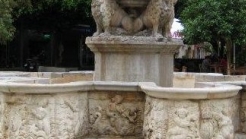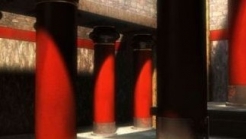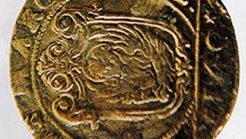

Greece
The aim of the exhibition is not only to provide info on the games in ancient times, but also to initiate the visitor in what the Olympics were.
Museum of the history of the Ancient Olympics
The most important exhibits are golden rings-stamps with the first depictions of sports, representative of the Minoan and Mycenaean art, copper and clay figurines of warriors and chariots from Olympia which are the first displays of the historic times pointing to chariot races, various objects that the athletes used, such as discii, The aim of the exhibition is not only to provide info on the games in ancient times, but also to initiate the visitor in what the Olympics were.
east and west pediment of the temple of Zeus were housed, as well as the facades, while at the fsr edge of the room the statue of Peonios Nike was prominent.
The old museum building sustained severe damages during the earthquakes that struck the area in 1954. Restoration and renovation had been routed since 1980. But only in 1999, owing to the Athens Olympics of 2004 did the restorations begin, after the completion of the needed studies. The restoration works were completed in 2003, and then the works for the laying of the exhibition on the History of the Ancient Olympics began.<span style="\"font-size:" medium;\"=""> For this reason, many different teams of the Ministry of Culture worked, in order for the project to be completed in time. The exhibition opened its gates on 24/3/2004. Moreover, teachers recommended the exhibition as an excellent teaching tool.


Heraklion is not just a city in the next visitor’s destination. Expresses something more, something deeper, a history of thousands of years. With this thought must learn the traveler to "read" the area beyond the mundane habits that require a visit to museums or at Knossos.


The palace of Knossos is The most famous architectural edifice of the Minoan civilization, which is the first flourished in Europe. Knossos is the most visited place for all who come to Crete and want to closely admire the splendor of the Minoans.


The museum was founded in 1967 and opened in September 1993. Housed in a building that exemplifies local traditional architecture and developed at two levels.
1039 Ε 6061 01515 00